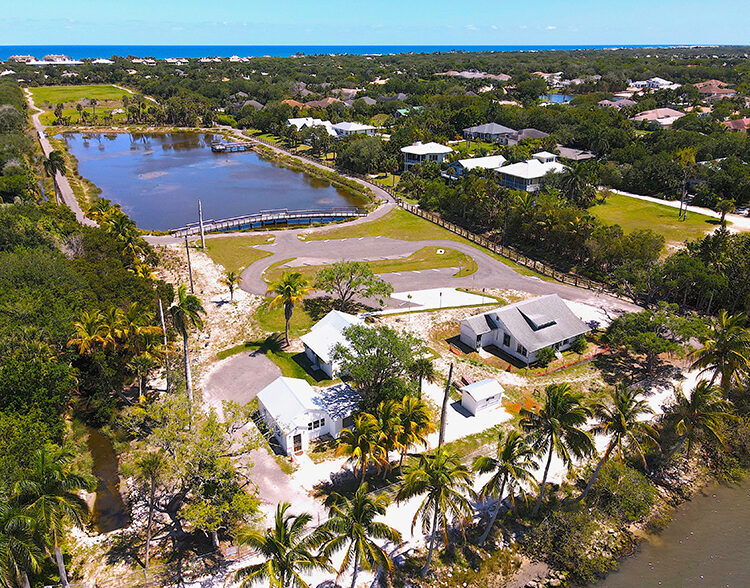
Indian River County plans to elevate and renovate the century-old Jones House on Jungle Trail and reopen the Florida Cracker-style wood-frame structure in late 2024 or early 2025 as an interpretive center.
However, county officials are preparing to give sneak peek tours of the environmental improvements on the surrounding 16-acre Jones Pier Conservation Area as construction winds down.
“We would like to start the sneak peeks in the next 30 days or less,” interim county Parks and Recreation Director Elizabeth Powell said Monday.
“It might be once a week for an hour or an hour and a half, where a limited amount of people can sign up for a sneak peek and then they’re guided throughout the site,” Powell said. “They’re with a staff member the whole time.”
Currently, Powell said, “we open the site to volunteers and guests associated with specific programming. It’s not open for general access.”
The county may reopen the grounds at 7770 Jungle Trail for regular public use by the end of the year, Powell said. The key is pouring 42 concrete piers and placing the Jones House on top.
“Once the house is elevated, then we can move to open the site and fence it off until the Interpretive Center has been completed,” Powell said.
The renovation of the 100-year-old house suffered a setback when no contractors submitted bids on the Jones House renovation project by the March 16 deadline, county records show.
Since then, county officials found three contractors who were unaware of the project and indicated they would participate in the second round of bidding, Powell said.
“I’m just glad we have three companies now that are interested in bidding, so it will be competitive,” Powell said. “I’m hoping it will go out in the next week to 10 days. It will stay out for a minimum of three weeks.”
The cost estimate came in at $100,000 to elevate and stabilize the historic residence and construct sidewalks and walking paths, county bidding records show.
But inflation is expected to increase the actual costs for construction materials and fuel, Powell said.
The house is being placed on 8-foot tall concrete piers to prevent flooding in the future after being inundated with more than a foot of water during Hurricane Matthew in 2016, Powell said.
The Federal Emergency Management Agency is providing nearly $60,000 for the project and the county is chipping in nearly $20,000, Powell said. The county can ask FEMA for more money if the actual costs increase.
After the county finds a contractor, it is expected to take three-to-six months to elevate the Jones House and another year to complete the interior renovations, said Assistant County Administrator Michael Zito.
“At this time, an opening date has not been set,” Zito said Friday (April 8). “(It) largely depends on the current construction contract and the pending bid for the elevation of the historic Jones Home.”
The county expects to complete several drainage facilities in the next two months to cleanse sediments from stormwater flowing into a salt marsh wetland connected to the Indian River Lagoon, Zito said.
A combination of contractors, county employees and volunteers installed approximately 10,000 native plants throughout the 16-acre site, Zito said.
A screw pump has been operating for six months to acclimate the new plantings to the brackish water from the lagoon, Zito said.
County employees are working with students from Indian River State College and other schools and agencies to conduct baseline sampling in the wetlands, Zito said. The county is working with community groups to determine the feasibility of establishing a native plant nursery and community garden in the conservation area.
Artist Dawn Witerington – who specializes in accurate artistic depictions of species, life histories and ecological relationships – has been hired to create educational renderings of the wetland and other amenities.
The county is also finalizing the design of the Interpretive Center, Zito and Powell said.
“Current plans that are in design right now will remove a wall to create an open space for the general public to come in,” Powell said. There will be educational videos and exhibits. A docent volunteer and/or county employee would operate the center.
“Our goal is to tell not only the history of the Jones Pier – because that’s really important about the pioneer history and early citrus on the barrier island – but we think this site is a great opportunity to talk about lagoon health, the story of Florida Inland Navigation District and the Intracoastal Coastal Waterway,” Powell said.
“We can talk about natural habitats, we can talk about barrier island ecosystems. All of that we think we can wrap into this small space.”



